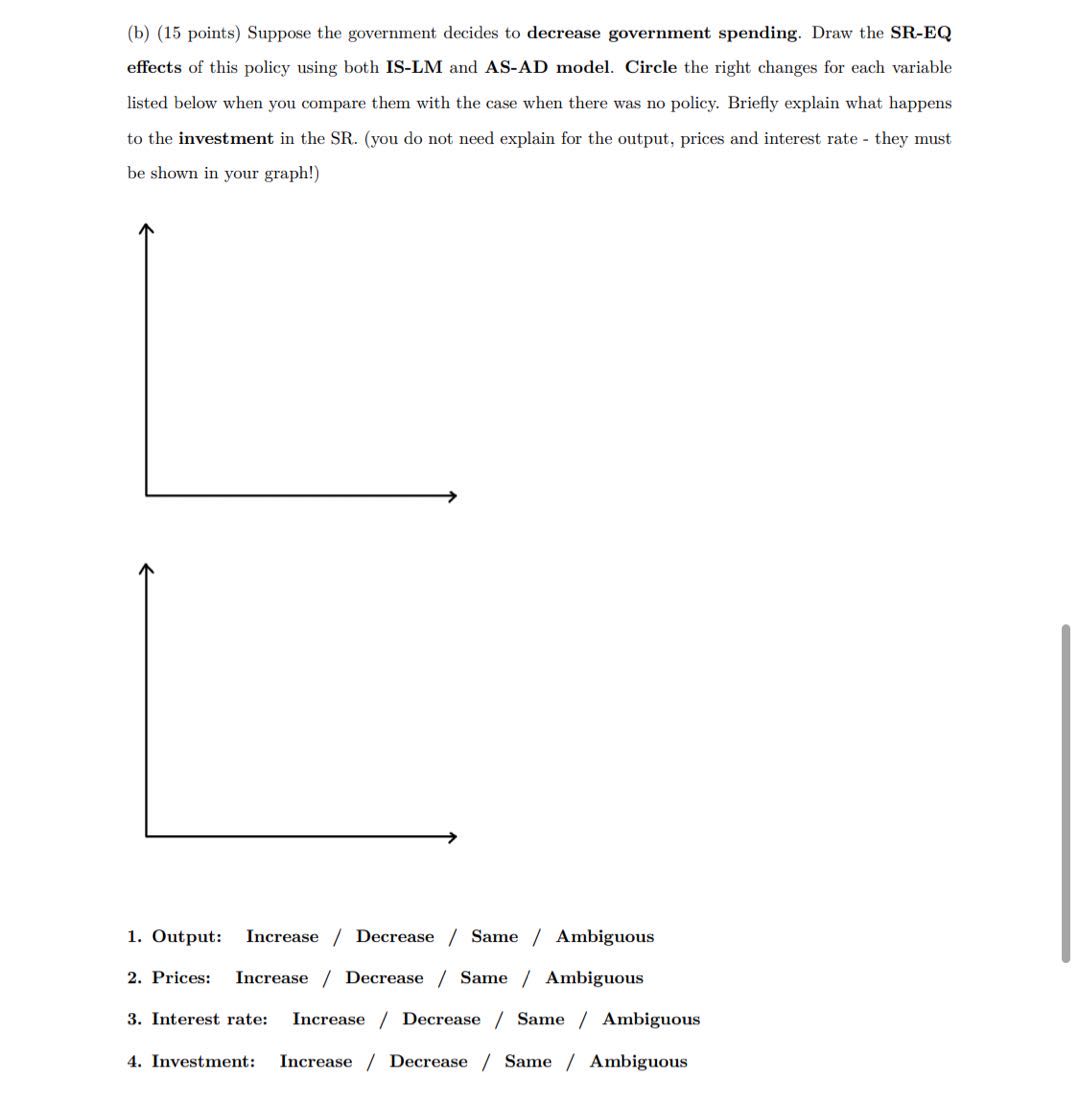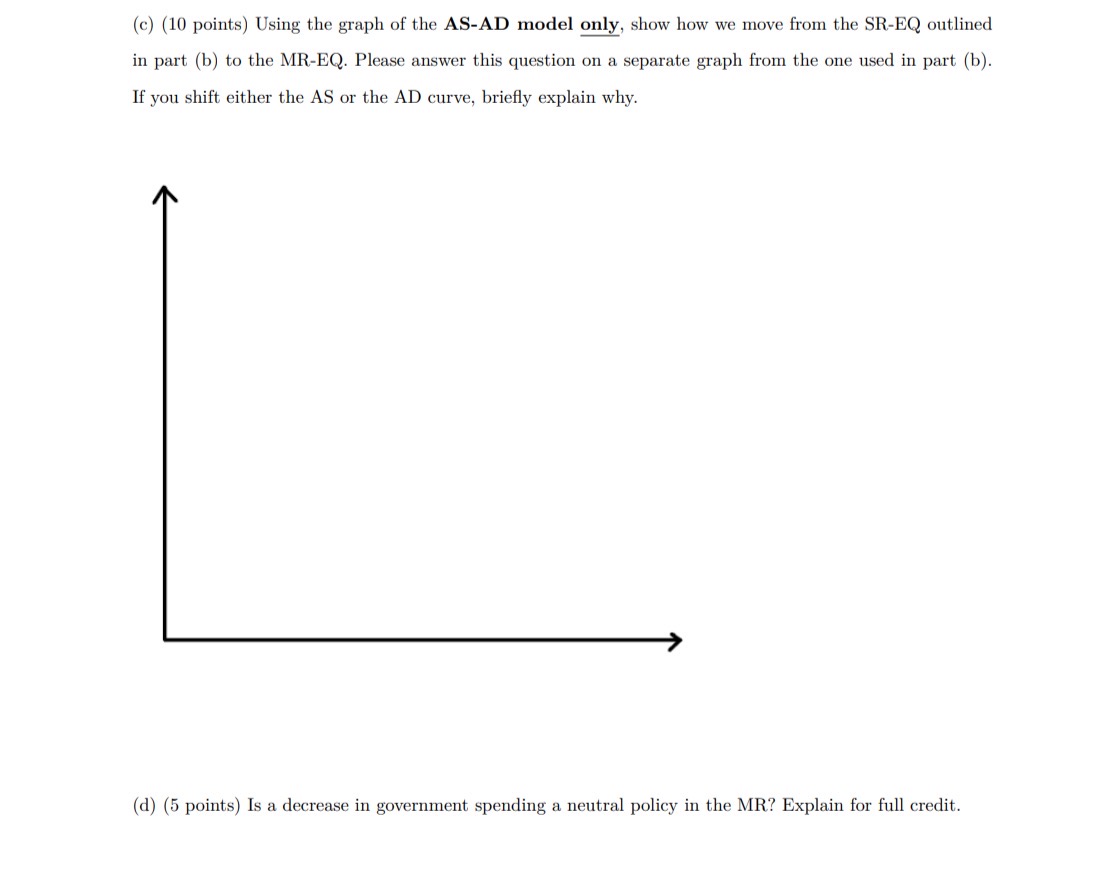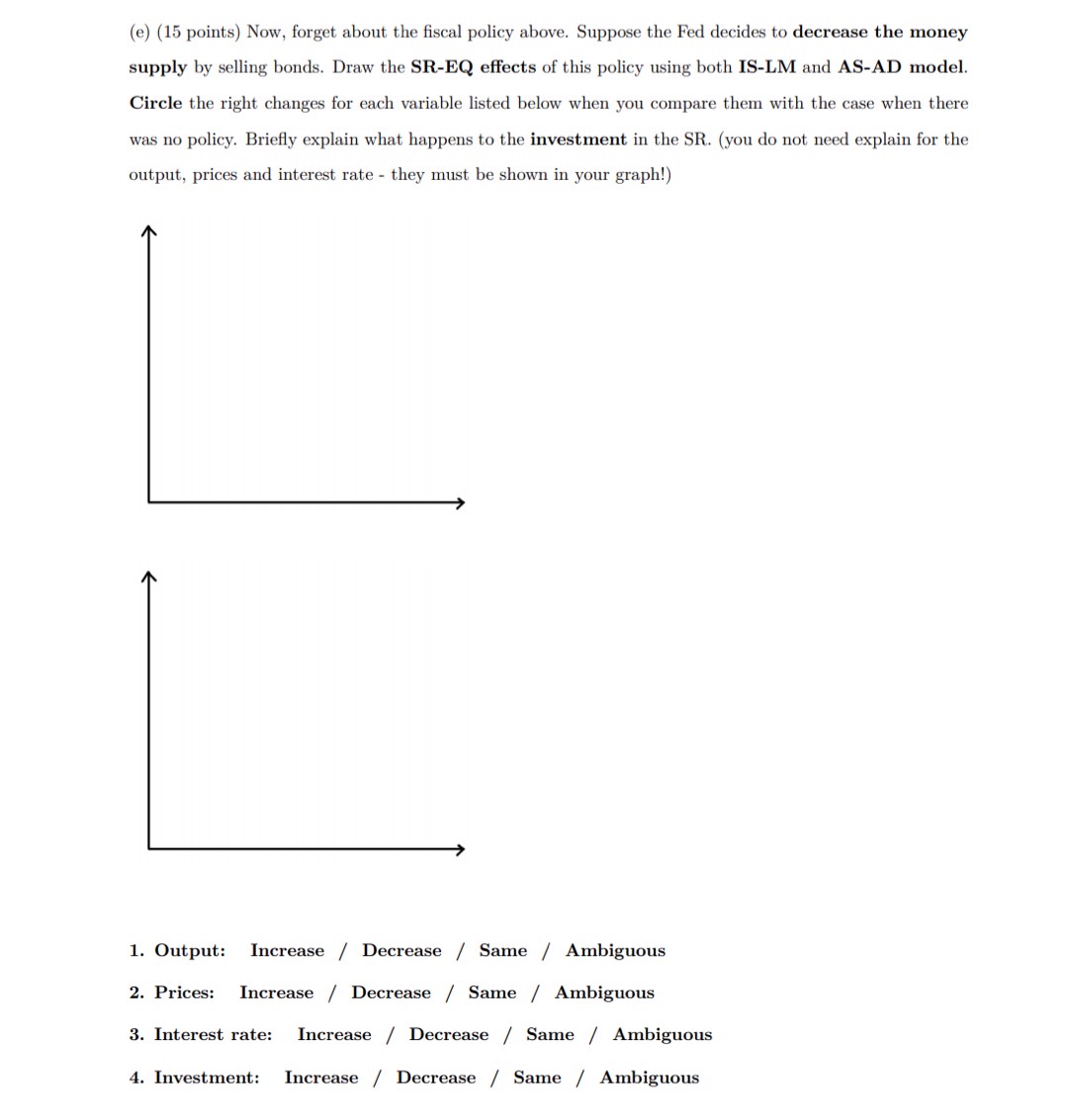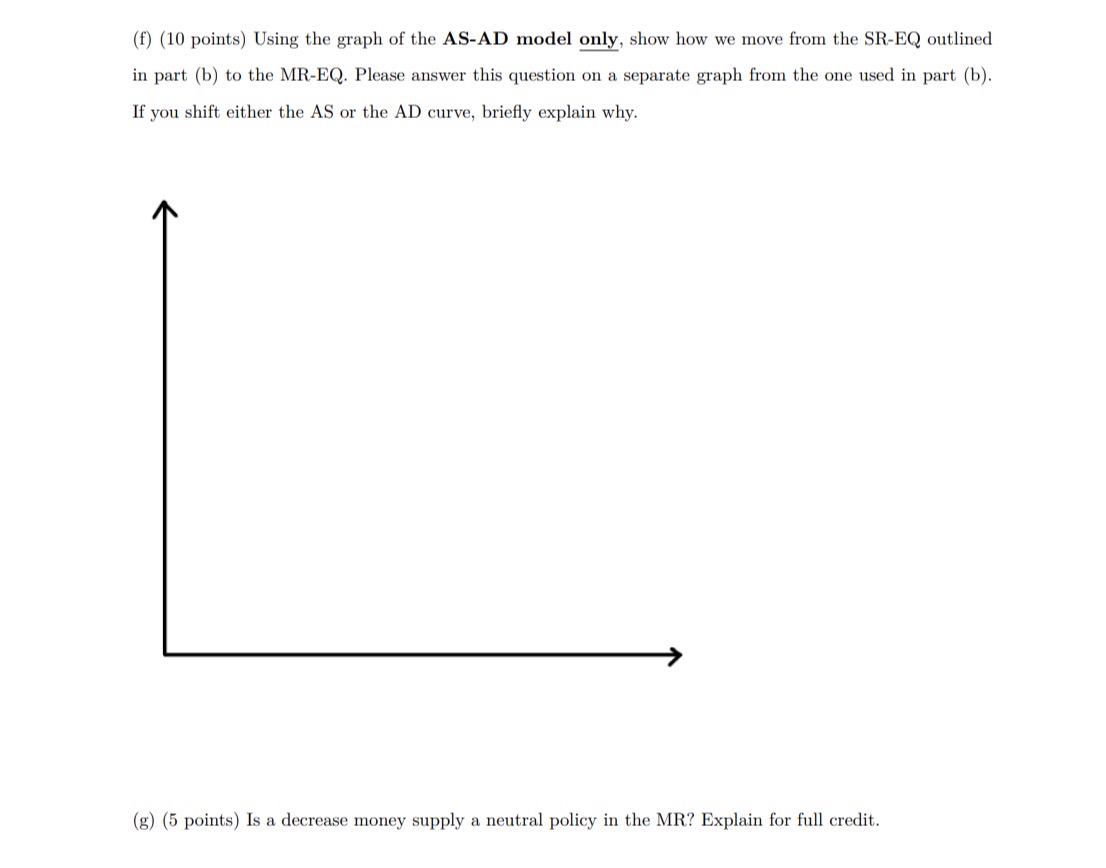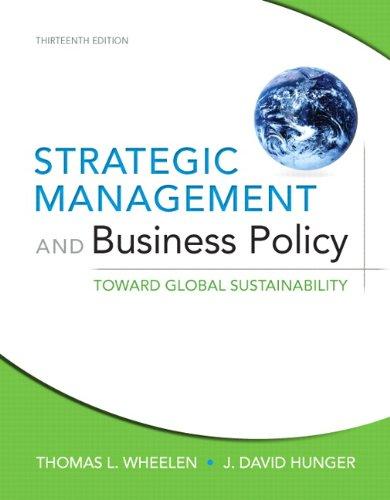Please help me with this question. Please answer the following questions as much as you can. Thank you.
IS relation. LM relation, AS relation and AD relations are given by: 18 Relation : Y = cor T) + um) +0 LMRelation : %=Y'L(i] ASRelation : P=P\"(1+m}F(l%,z) AD Relation : Y = Y (%.G.T) Consider an ASAD equilibrium at some point A. Assume at this initial equilibrium, the price level. PA, equals the expected price level, P\". (a) {10 points) Fill in the blank or circle the right answer. You do not need to explain. cf) MREQ a Medium Run eqllbrium SREQ E Short Run Equilibrium 1. In the MREQ, the output (Y) must be equal to 2. In the MR-EQ, the expected price level (P9) must be equal to 3. Monetary Policy is Neutral I Not Neutral f Unknown for Neutrality in the Short Run 4. Monetary Policy is Neutral I Not Neutral f Unknown for Neutrality in the Medium Run 5. Fiscal Policy is Neutral { Not Neutral f Unknown for Neutrality in the Short Run 6. Fiscal Policy is Neutral / Not Neutral f Unlmmvn for Neutrality in the Medium Run (b) (15 points) Suppose the government decides to decrease government spending. Draw the SR-EQ effects of this policy using both IS-LM and AS-AD model. Circle the right changes for each variable listed below when you compare them with the case when there was no policy. Briey explain what happens to the irlvestnient in the SR. (you do not need explain for the output, prices and interest rate - they must be shown in your graph!) 1. Output: Increase / Decrease / Same f Ambiguous 2. Prices: Increase / Decrease / Same / Ambiguous 3. Interest rate: Increase / Decrease / Same / Ambiguous 4. Investment: Increase / Decrease / Same / Ambiguous (c) (10 points) Using the graph of the AS-AD model only, show how we move from the SR-EQ outlined in part (b) to the MR-EQ. Please answer this question on a separate graph from the one used in part (b). If you shift either the AS or the AD curve, briefly explain why. (d) (5 points) Is a decrease in government spending a neutral policy in the MR? Explain for full credit.(e) (15 points) Now, forget about the scal policy above. Suppose the Fed decides to decrease the money supply by selling bonds. Draw the SR-EQ e'ects of this policy using both IS-LM and AS-AD model. Circle the right changes for each variable listed below when you compare them with the case when there was no policy. Briey explain what happens to the investment in the SR. (you do not need explain for the output, prices and interest rate - they must be shown in your graph!) 1. Output: Increase / Decrease / Same / Ambiguous 2. Prices: Increase / Decrease / Same / Ambiguous 3. Interest rate: Increase f Decrease / Same / Ambiguous 4. Investment: Increase / Decrease / Same / Ambiguous (f) (10 points) Using the graph of the AS-AD model onlx, Show how we move from the SR-EQ outlined in part (b) to the MR-EQ. Please answer this question on a. separate graph from the one used in part (b). If you shift either the AS or the AD curve, briey explain why. (3) (5 points) is a decrease money supply a neutral policy in the MR? Explain for full credit

